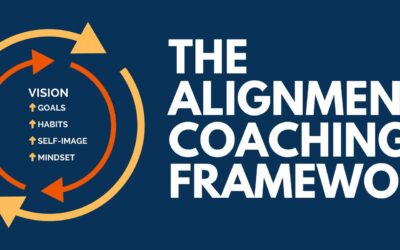When Worst-Case Scenario Thinking Becomes a Habit
If you’re always bracing for the worst, you’re not being realistic. You’re just very committed to your rehearsal schedule. Catastrophizing isn’t a personality trait. It’s a coping mechanism that calcified. What started as a way to stay safe eventually rewired your brain to expect disaster and call it preparation.
You may call it being responsible. Strategic. Smart. But your nervous system doesn’t care what you call it. It just reacts. Every time you simulate a worst-case outcome, your body launches the full stress protocol. You burn out your focus, shrink your tolerance for uncertainty, and start trusting dread over desire. It’s not realism. It’s repetition.
Why Worst-Case Scenario Thinking Feels Smart (But Isn’t)
- You’re training your brain to confuse fear with facts.
Catastrophizing is a mental shortcut. It bypasses nuance and gives your brain a temporary sense of control. But over time, that shortcut becomes automatic. Automatic becomes invisible. Eventually, you’re not catastrophizing. You’re “just being honest.” Even though you’re not. You’re just rehearsing a fear scenario you’ve practiced so often it feels like evidence. - Loss aversion is distorting your decisions.
Behavioural research shows that humans are wired to weigh potential loss more heavily than potential gain. That means even imagined losses have outsized influence on your risk tolerance. Worst-case thinking amplifies this effect until dread starts to feel like maturity, and hope feels irresponsible. It isn’t. That’s just how your brain is misreading the data. - You’re avoiding disappointment by pre-living it.
You think you’re bracing yourself to avoid pain. But in reality, you’re dragging disappointment into the present and calling it preparation. You teach yourself not to want anything too much, just in case it doesn’t happen. And when something good does happen, you can’t enjoy it fully, because you’ve already decided it’s temporary. Joy becomes something you monitor, not something you feel.
If that sounds exhausting, it’s because it is.
What It’s Really Costing You
Here’s what doesn’t get said enough: pessimism limits imagination. And imagination is required for momentum. You cannot build, pursue, create, or risk when your brain is locked in defence mode. Worst-case scenario thinking doesn’t just poison your outlook. It narrows your capacity to think strategically, dream realistically, or emotionally engage with anything that doesn’t feel guaranteed.
And if you have ADHD or just a finely-tuned pattern-recognition system, this loop is even more brutal. It feels like insight. But it’s just a groove you’ve worn into your brain from overuse.
You Don’t Need Positivity. You Need Precision.
This isn’t about delusion or affirmation. It’s about learning how to recognize the difference between intelligent doubt and habitual fear. At Kickstartology Coaching, we use the Alignment Framework to help you spot where your brain is rigged against you and teach it how to think differently, without pretending everything is fine.
You’ll learn how to catch spirals before they pull you under, how to stop assigning authority to your worst thoughts, and how to feel forward movement even when uncertainty is still in the room. This isn’t mindset work. It’s mental reprogramming, built on strategy and actual behavioural science, not wishful thinking.
If Catastrophizing Feels Like Your Default, Let’s Break the Pattern
You’re not broken. But your autopilot might be.
Book a free coaching exploration call and learn how to stop outsourcing your nervous system to fear.
Or watch this video if you’re not ready to talk yet. That’s fine. You don’t have to be hopeful. You just have to want something else.
P.S. If you want some help figuring out the next part, book a free coaching exploration call. We’ll talk about what’s going on and whether group coaching or 1-on-1 coaching fits. No pressure. Just clarity.
Not ready to talk?
Start with my FREE mini starter course:
KICKSTART: THE FIRST STEP
Make the decision that changes everything else.
Clarity, commitment, and forward motion. Ten minutes a day. Starting now.
A Parent NOT Freaking Out about Back-To-School
By Nadine Araksi, Toronto-based Story Coach Like many of you, my kids have been home since March 13. After a spring of yelling at various members of this household to get on their Zoom calls, I have enjoyed a summer of leaving them to their own devices (literally),...
Body Image – Creating a Vision with the Alignment Framework
By Stephanie Marshall, Toronto based Master Alignment Coach Stephanie Tackles Body, Body Image, & Health Habits using the Kickstartology Alignment Framework Part 2 At least I don’t have thick ankles like Bathsheba Everdene. Let me back up. I always tell my...
Alignment Coaching Defined
Kickstartology is the original creator of The Alignment Coaching Framework. What is Alignment Coaching? When your habits, choices, and direction finally stop arguing, everything gets easier. Alignment coaching is what happens when your habits, decisions, and direction...







